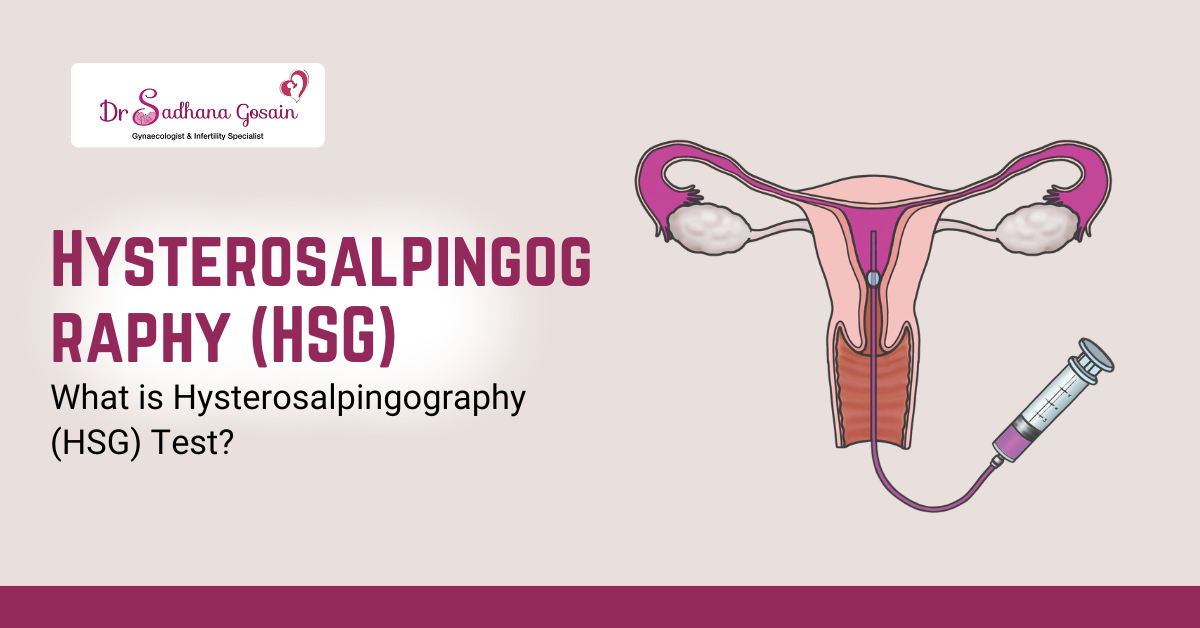What is Hysterosalpingography (HSG) Test?
Hysterosalpingography (HSG) is a specialized X-ray procedure used to examine the uterus and fallopian tubes. It is primarily used to investigate infertility issues and detect abnormalities in the reproductive system.
The HSG test helps determine whether the fallopian tubes are open or blocked, providing crucial insights for women trying to conceive.
Why is the HSG Test Done?
The HSG test is recommended for several reasons, including:
- Evaluating Infertility: It helps detect blockages or abnormalities in the fallopian tubes, which can prevent conception.
- Detecting Uterine Abnormalities: The test can identify issues like fibroids, polyps, scar tissue, or congenital uterine anomalies.
- Assessing Tubal Patency After Surgery: Women who have had tubal surgery may undergo an HSG to ensure that the tubes are open.
- Investigating Recurrent Miscarriages: Structural problems in the uterus can contribute to repeated pregnancy loss.
- Checking for Infections or Adhesions: Previous infections like pelvic inflammatory disease (PID) may lead to scarring that affects fertility.
How is the HSG Test Performed?
The HSG test is an outpatient procedure performed in a radiology department or a gynecologist’s clinic. It typically follows these steps:
- Preparation: The test is usually scheduled between days 7-10 of the menstrual cycle to avoid interfering with a potential pregnancy.
- Positioning: The patient lies on an X-ray table, similar to a pelvic exam setup.
- Insertion of a Speculum: A speculum is inserted into the vagina to access the cervix.
- Injection of Contrast Dye: A thin tube (catheter) is inserted into the cervix, and a contrast dye is injected into the uterus.
- X-ray Imaging: As the dye flows through the uterus and fallopian tubes, X-rays are taken to observe any blockages or abnormalities.
- Completion and Recovery: The procedure usually takes about 15-30 minutes, and patients can resume normal activities soon after.
Is the HSG Test Painful?
Many women experience mild to moderate discomfort during the test, similar to menstrual cramps. The level of pain varies, but taking a pain reliever (like ibuprofen) before the procedure can help minimize discomfort.
Risks and Side Effects of HSG Test
The HSG test is generally safe, but some potential risks include:
- Mild cramping and spotting for a few days.
- Allergic reactions to the contrast dye (rare).
- Infection (uncommon but possible).
- Temporary dizziness or nausea.
If you experience severe pain, heavy bleeding, fever, or unusual discharge after the procedure, consult your doctor immediately.
What Do the HSG Test Results Mean?
- Normal Results: If the contrast dye flows freely through the uterus and fallopian tubes, it indicates that the tubes are open, and there are no structural abnormalities.
- Blocked Fallopian Tubes: If the dye does not pass through one or both tubes, it suggests a blockage, which may impact fertility.
- Uterine Abnormalities: The test may reveal polyps, fibroids, adhesions, or other irregularities in the uterus.
What Happens After the HSG Test?
- Many women can resume normal activities immediately, though some may prefer rest for a few hours.
- Some doctors recommend avoiding intercourse for 1-2 days to prevent infections.
- If abnormalities are detected, the doctor will discuss further treatment options, such as laparoscopy, hysteroscopy, or fertility treatments.
View this post on Instagram
FAQs – HSG Test
1. When is the best time to get an HSG test?
HSG is typically done between the 7th and 10th day of the menstrual cycle to ensure the uterus is clear of menstrual blood and to minimize the risk of pregnancy interference.
2. How should I prepare for an HSG test?
Your doctor may recommend taking an over-the-counter pain reliever (like ibuprofen) 30-60 minutes before the procedure. You may also be prescribed antibiotics if there is a risk of infection.
3. Can I eat before the HSG test?
Yes, there are no dietary restrictions before the test, but some women prefer a light meal to avoid nausea.
4. Will I need anesthesia for an HSG test?
No, anesthesia is not required as the procedure is quick and involves minimal discomfort.
5. Can I get pregnant after an HSG test?
Yes, many women conceive shortly after an HSG test, especially if minor tubal blockages are cleared by the procedure.
6. How long does the test take?
The actual procedure lasts about 15-30 minutes, but you may need to stay at the clinic for about an hour for preparation and post-test observation.
7. What should I expect after the test?
You may experience mild cramping, light spotting, and a slight vaginal discharge due to the contrast dye. These symptoms usually resolve within a day or two.
8. What if my HSG test shows blocked tubes?
If one or both tubes are blocked, your doctor may recommend further tests like laparoscopy or assisted reproductive techniques (such as IVF) to improve your chances of conception.
9. Is the HSG test covered by insurance?
Coverage varies depending on your insurance provider. It’s best to check with your insurance company to understand the costs involved.
10. Can HSG help with unexplained infertility?
Yes, HSG can identify hidden causes of infertility, such as minor tubal blockages or uterine abnormalities, which can then be treated accordingly.
Book an Appointment with Dr. Sadhana Gosain – Expert Gynecologist in Delhi
If you are experiencing fertility issues and need an HSG test, consult Dr. Sadhana Gosain, a highly experienced gynecologist in Delhi. She specializes in fertility treatments, reproductive health, and gynecological care.
📞 Call Now: 9711146246
Dr. Gosain provides expert guidance and personalized treatment to help you achieve your dream of parenthood. Schedule your appointment today!



